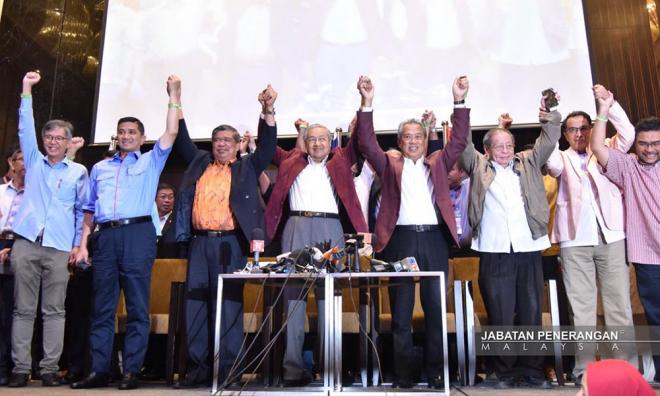
Published by The Asean Post, image from The Asean Post.
The vice-president and managing director of Sage Asia, Arlene Wherrett, was recently reported to have said in an interview with Bernama that “Despite the high level of awareness on the importance of digital adaptation in businesses, small-medium enterprises (SMEs) are still complacent in moving up or upskilling their workforce to adopt automation”. According to Wherrett, most of the barriers derived from a lack of knowledge on how to adapt to digital tools in their business processes.
In addition to being disruptive, the setting up and maintenance of digital infrastructure is costly. According to a study done in 2016 on Malaysian SMEs, 45 percent encounter budgetary constraints and thus under-invest in enterprise resource planning (ERP) that is more cost effective in the long run.
And according to the White Paper, “Accelerating Malaysian Digital SMEs: Escaping the Computerisation Trap”, while 44 percent of SMEs are using cloud computing, most of them have not adopted cloud software-as-a-service to drive software process improvements. Instead, they are only using cloud storage services such as Dropbox to store personal documents, pictures and videos.
Implicit in the White Paper is an acknowledgement that there is, as yet, a concerted and coordinated government effort set within a focused and concentrated overarching strategy towards empowering SMEs. To be more precise, this is in reference to the context of providing the financial support and back-up for ICT participation and integration.
As it is, the exostructure of digitalisation would drive productivity and output gains by reducing backlogs and bottlenecks in the production process and promoting Just-In-Time practices and also saving the need on warehouse and storage costs. At the same time, production and business patterns could be analysed to yield and construct forecasts and projections which in turn could be fed back into the specific sub-system, i.e. business solutions software or within the broader ERP.
The advantages and benefits go beyond the vertical integration of vendor and supplier, and producer and distributor relationships. It also extends to the horizontal relationship with clients and customers / end-users (i.e. horizontal relationship) as embodied in the traceability or tracking system in the use of the pre-existing RFID (radio frequency identification) technology via customs checks utilising e.g. electronic rules of origins (eROOs).
So, the vertical and horizontal dimensions can be better assimilated and merged by digital adaptation.
Towards that end, an overarching “Smart Nation / Malaysia” strategic policy framework should be crafted without delay (taking our cue from Singapore). The framework should include a road-map and action plan on a closer strategic collaboration between the State and the SMEs (under the rubric of “Smart Economy”).
Hence, the government should not only be enablers in the background but also at the forefront by providing step-by-step and continuous guidance and mentoring and even ‘doing the thinking’ on behalf of SMEs to ensure that ‘old habits’ are dismantled and destroyed.
Concretely, to initiate the process, this approach could be translated and materialised into the dispatching of government (or government-sponsored) ICT / digitalisation experts to the SMEs to provide the education and training for the transition and move towards such integration and modernisation and upgrade.
The costs for infrastructural migration could be borne by a dedicated fund pooled from amongst the contributions of SMEs and a nominal levy or hypothecated tax from e-commerce transactions matched ringgit-for-ringgit by the government.
Tax incentives, reliefs and allowances should also be considered, for example, in the investment in upgrading processes. Not only could both software and hardware be offset against taxable income or profits in the same way as conventional assets (amortisation for intangible and depreciation for tangible). But that tax reliefs could also be claimed for the contribution to the dedicated fund thus further reducing the tax burden or liability of SMEs.
And it is proposed that SMES that have a turnover less than RM500,000 but which have moved towards digitalisation are able to collect the SST (perhaps beginning starting with a higher rate 10 percent and gradually decreasing to 5 percent within 5 years).
The SST collected could be channelled towards the sponsoring of an integrated virtual warehouse for storage of data and business processing – i.e. shared services. Except that instead of outsourcing to a private contractor, it is the State here that assumes the role, at least on a transitional or temporary duration and basis.
This would contribute towards reducing costs for SMEs and alleviating some of the associated problems such as under-utilisation or over-utilisation of existing ICT resources, i.e. with sub-optimal results.
The State and private sector should explore the use of blockchain technology to further lower the costs of cloud computing and virtualisation whilst enhancing security and efficiency and productivity of SMEs.
At the end of the day, reduction in the digital adaptation and compliance costs arising from State-SME collaboration will promote the horizontal and vertical integration, thus having a knock-on effect on the entire supply chain.
Ultimately, this will translate into lower consumer costs and hence, by extension, impact the cost of living overall. And both the cost of living and supply chain issues are at the forefront of the people’s concerns (as indicated by EMIR Research’s National Worry Index/ NWI and Government Satisfaction Index/ GSI).
There is no doubt that SMEs require greater assistance from the government if they were to make the quantum leap or jump into the digital era and prepare for the 4IR. The government’s role should be more than just enabler and destroyer but also mentor and leader in this regard.
Jason Loh Seong Wei is Head of Social, Law and Human Rights at EMIR Research, an independent think tank focused on strategic policy recommendations based on rigorous research.

